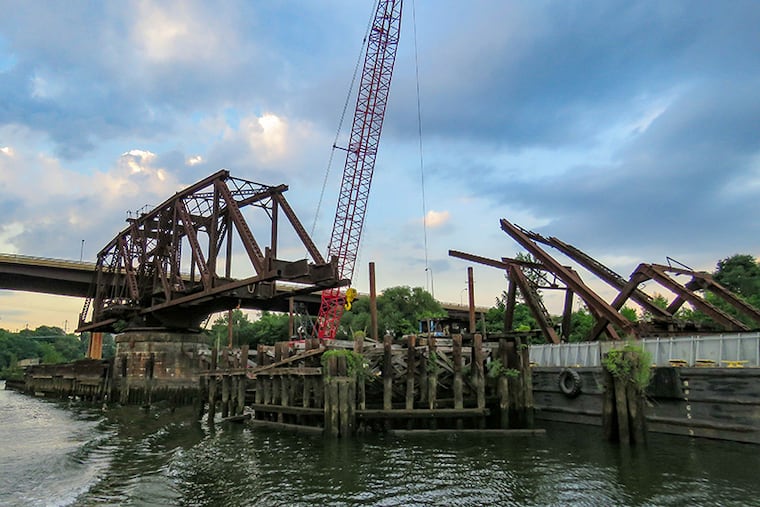Why the completion of the Schuylkill River Crossing bridge has been delayed for years
It involves a windstorm, a run-in with a barge named Alfalfa, and pandemic-related supply chain delays.

A much-anticipated trail bridge for bicycles and pedestrians linking Southwest Philadelphia to Grays Ferry was slated to open in 2019. After a series of unfortunate events, including a windstorm and run-in involving a 150-foot barge named Alfalfa, the opening likely won’t happen until summer 2024.
“The hope is that once it gets up there, everything will work right and it will look great,” said Joseph Syrnick, president of Schuylkill River Development Corporation, which coordinated the feasibility study for the bridge and managed the design on behalf of the city.
“It’ll connect the east side of the river from the west side of the river and everybody will forget about all this stuff that went on beforehand, because that’s what usually happens.”
Here’s what to know about the bridge that is slated to connect Grays Ferry Crescent and Bartram’s Mile. But first, a bit of history.
The Philadelphia, Wilmington & Baltimore Railroad Company Swing Bridge was completed in 1902. It could turn 90 degrees to make way for passing boats. Conrail would acquire the bridge and other railroad assets in 1976 through consolidations, eventually abandoning it in 1984.
Fast forward to 2015, and the city complemented its own contribution for a new bridge with funds from the state and a federal TIGER grant. Two years later, the bridge officially changed hands from Conrail to the city. The estimated cost of the project at the time was $13 million. Work began in 2018.
Then, the wait.
Keisha McCarty-Skelton, the spokesperson for the Streets Department, attributed delays to “typical construction issues,” truss design and fabrication issues, and pandemic-related supply chain delays that “affected procurement of project materials such as truss steel and movable bridge steel machinery.”
There’s also the allision incident — a nautical term for when a ship strikes a stationary vessel, in this case, the bridge’s west pier fender.
A 25-foot tugboat named Mr. Smith was transporting a 150-foot barge named Alfalfa toward Fort Mifflin in September 2020, according to a court filing seeking to limit the tugboat owner’s liability. As the Alfalfa made its way through the Schuylkill, it hit the bridge’s fender, which resulted in allegations of property damage.
There was also a windstorm. The city could not confirm the exact timing of the incident but Syrnick said he suspects it was in late 2020. The truss, which was about to be painted, was wrapped in a tarp to prevent damage from an impending storm, Syrnick said.
“It created like a sail there and it put tremendous wind loads on the bridge,” he explained. “It actually bent some of the parts.”
Work paused for two years as the logistics of the repairs were sorted out between the city and the manufacturer, according to Syrnick.
The Streets Department said the truss is slated to be delivered to the site this fall. It is now being worked on at a fabrication plant in Coatesville, said Syrnick. McCarty-Skelton said the cost of the project is expected to increase but the amount is unknown.
Despite delays, Syrnick stressed the positives. This bridge will not only offer southwest residents access to green space, he said, it will also connect them to Center City and everything it has to offer.
“Which is restaurants, theater, schools, but mostly jobs,” he said. “That’s where the jobs are.”
Staff writer Ryan Briggs contributed to this article.